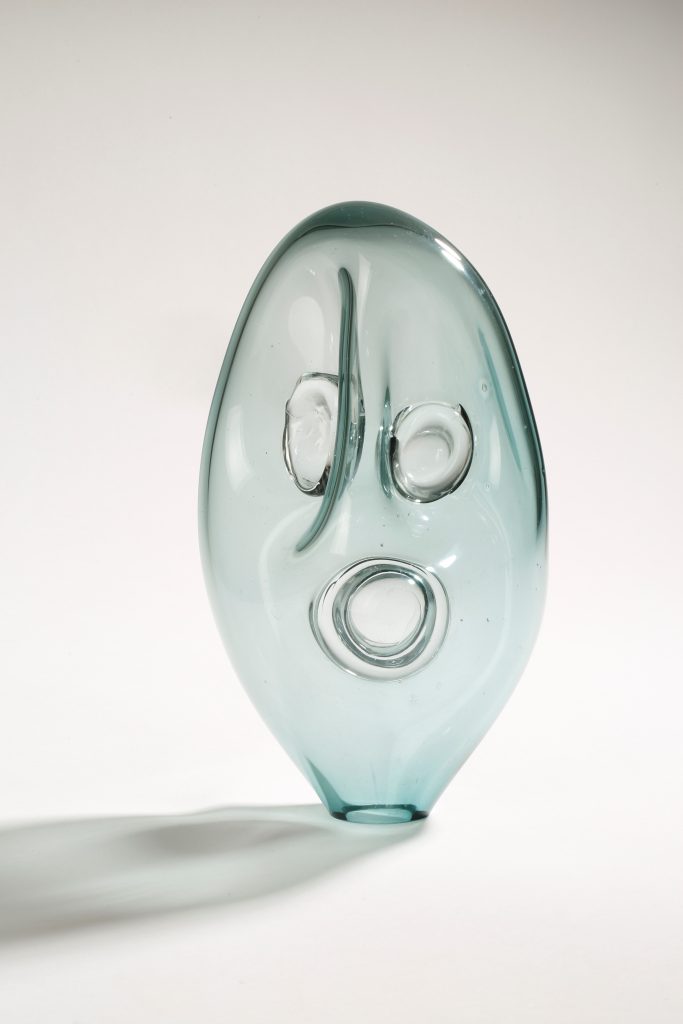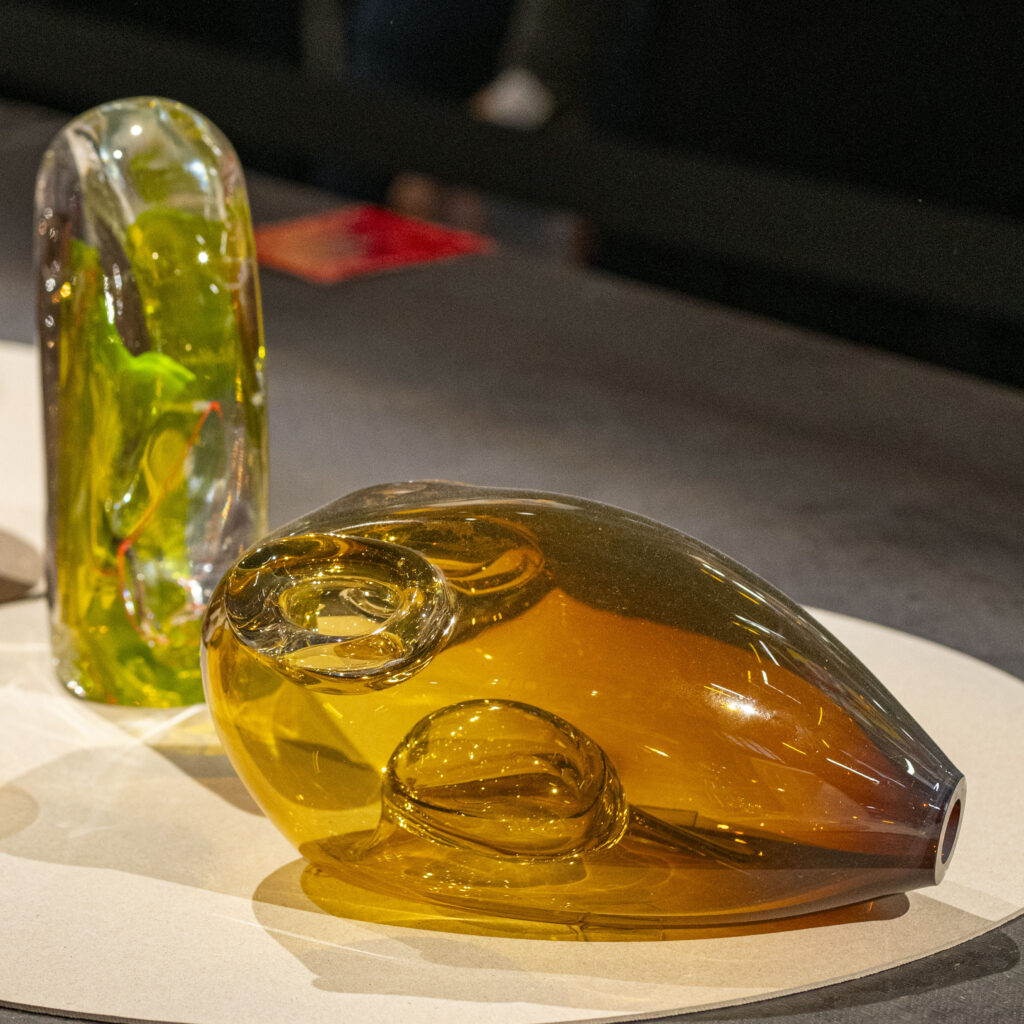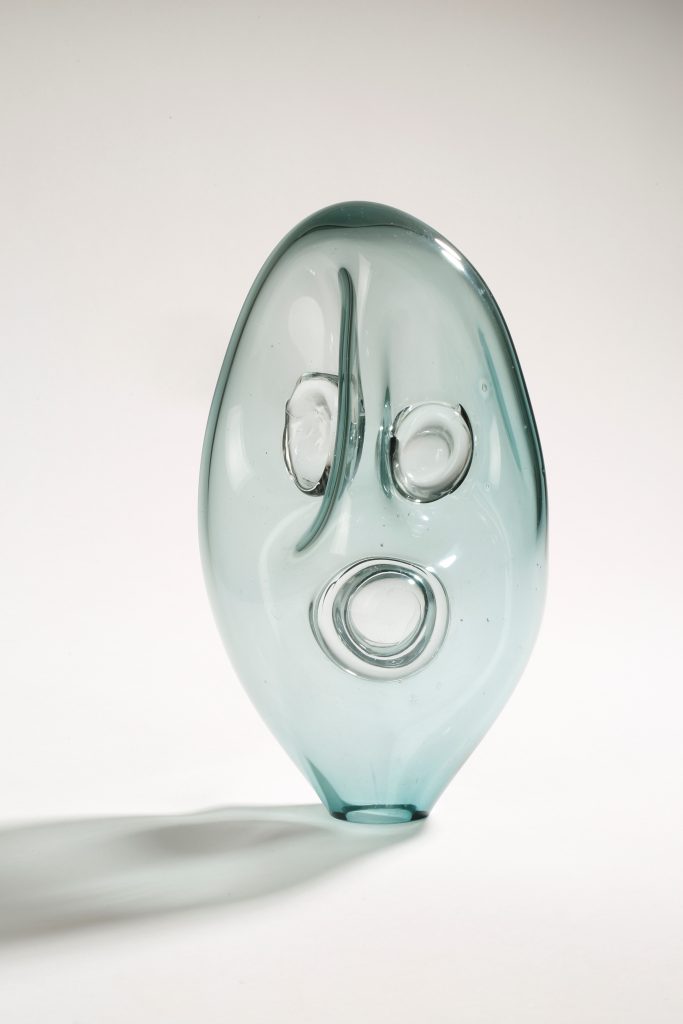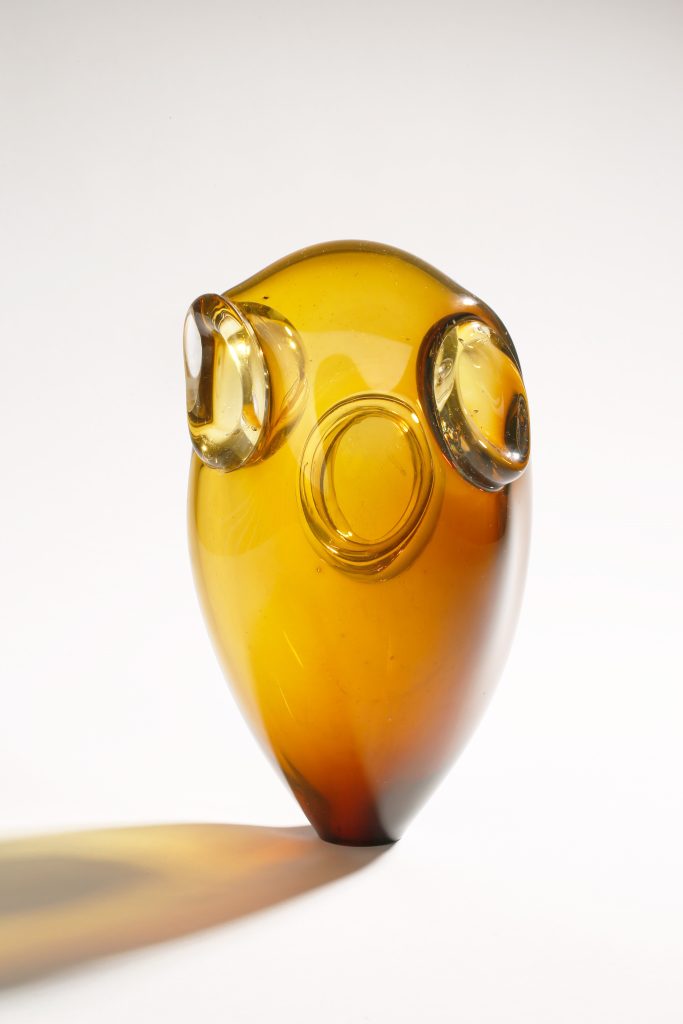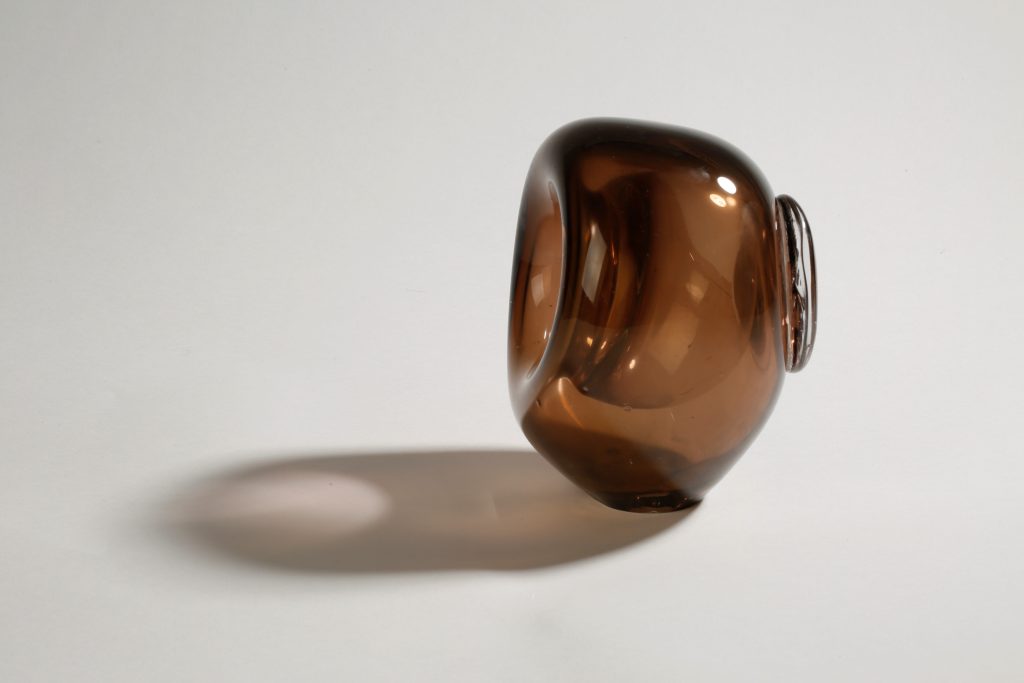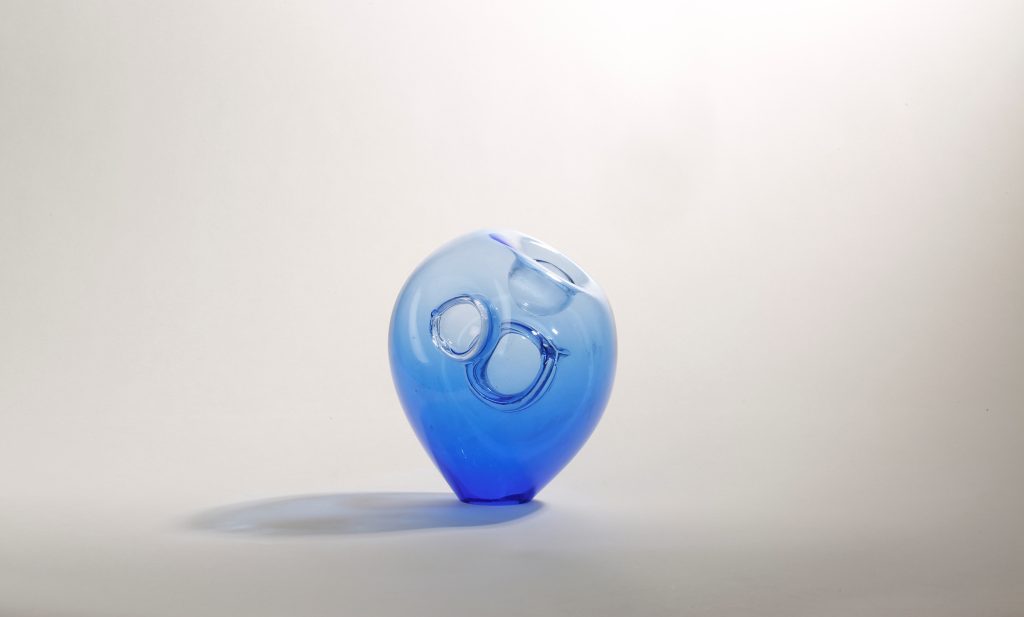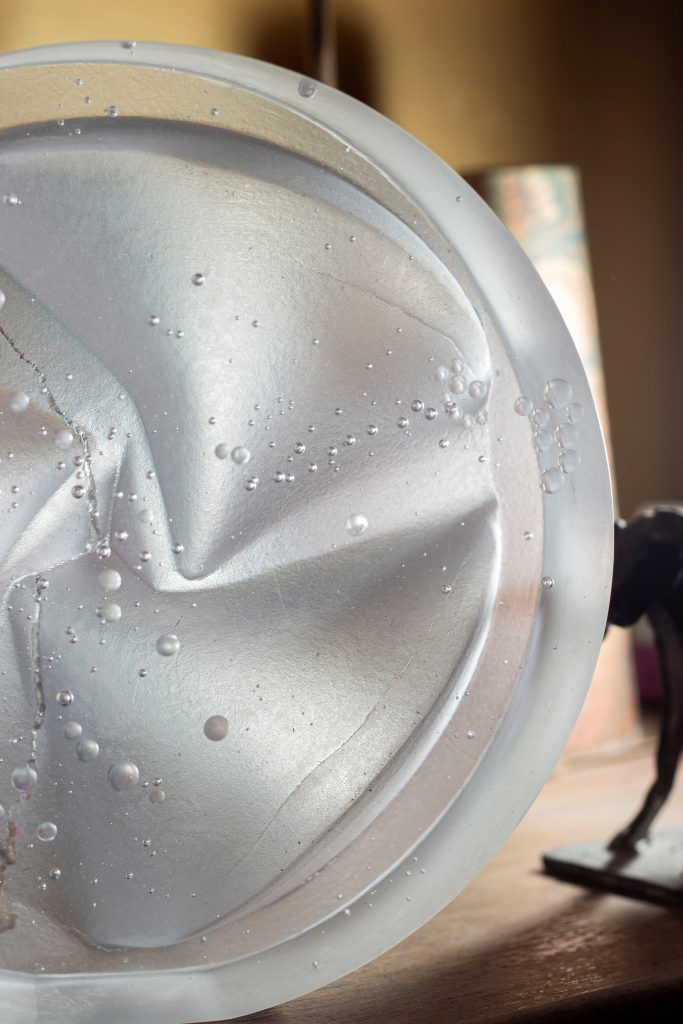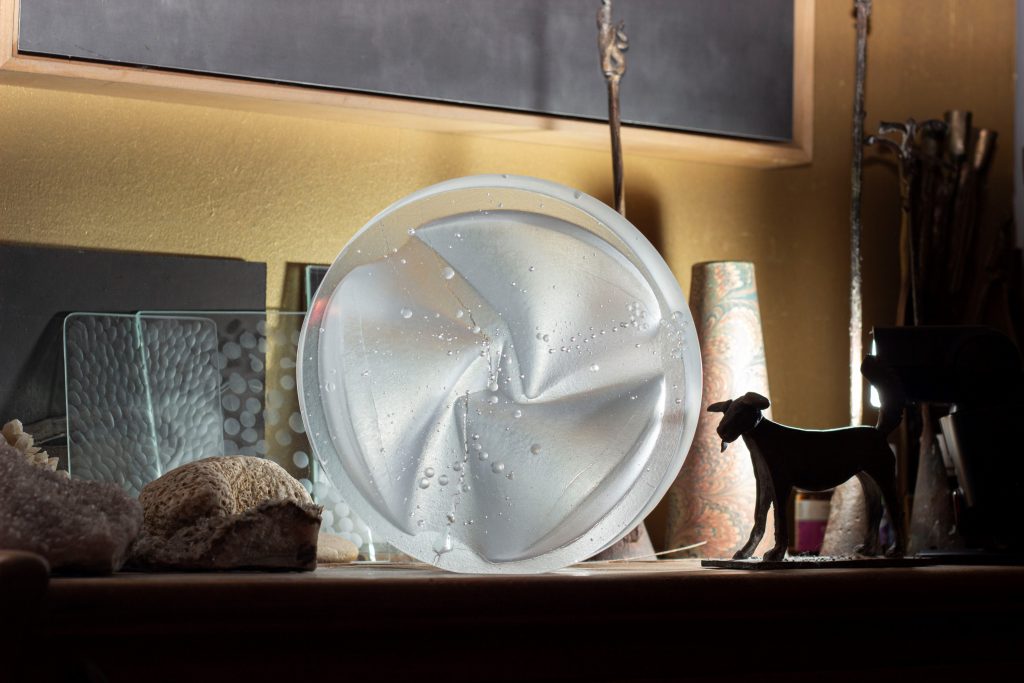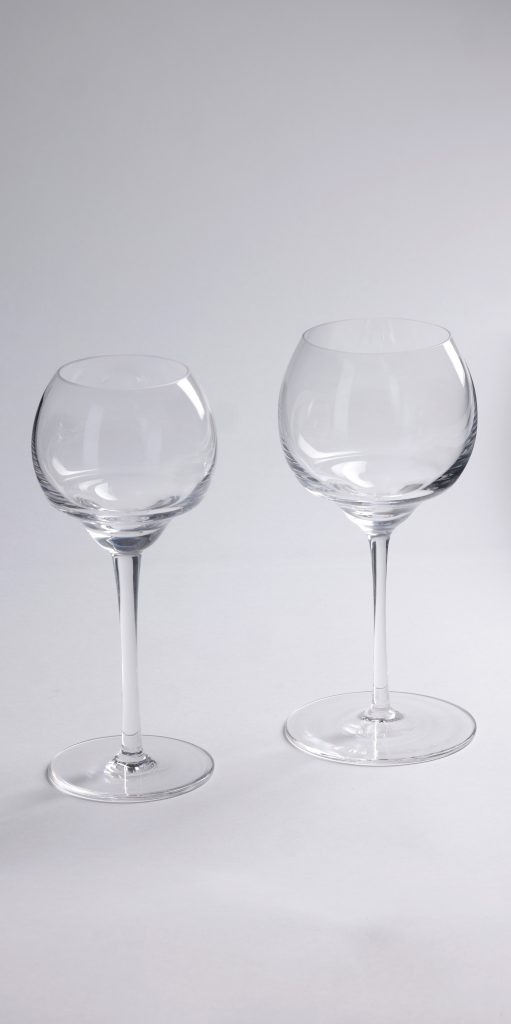Pálfi Lujza
Lujza Mária Pálfi began her artistic studies at the Secondary School and College of Fine and Applied Arts, attending from 2016 to 2021, specializing in glass. During this time she developed a deep appreciation for the craft and decided to pursue her education at the university level. From 2021 to 2022 she studied University of Pécs, Faculty of Arts, in the Designer Maker program with a specialization in glass. After her first year, she applied to the Object Design program with a specialization in glass at the Moholy-Nagy University of Art and Design, where she began her studies in 2022 and is currently continuing her education.
In addition to her studies, she has participated in several exhibitions and won an award. In 2019, she won the Industrial Design Award from the National Association of Hungarian Creative Artists. In 2021, her exam project from the Secondary School of Fine and Applied Arts was exhibited at the Kiskép Gallery. In 2023, she participated in the Glass Art Now! Venice Glass Week group exhibition in Venice. In 2020,2021,2022 and 2023 she also took part in the summer symposium of the Goszthony Mária International Glass Art Sympozium. Additionally, in 2024, some of her works were exhibited at the Glaspring contemporary glass group art exhibition.
About the objects
Trophy
This project was a university assignment that required the design and creation of a glass trophy for an awards ceremony. Lujza Pálfi chose to design the European Roma Spirit Award (ERSA) because it focuses on supporting and integrating the Roma community, a cause that is important and socially sensitive to her. ERSA recognizes organizations and individuals who work to improve the living conditions of the Roma minority. The glass trophy features a twisting triangle shape that references the red wheel on the Roma flag and symbolizes their nomadic lifestyle. The twisting motion adds dynamism and movement to the form and evoking the rose motif, which is also important in Roma culture. The intertwined shapes represent the solidarity within the Roma community.
Beaujolais and Burgundy lead crystal wine glass
Her design was inspired by Beaujolais wine, a light, fruity red wine from the Beaujolais region of France, typically made from Gamay grapes using the carbonic maceration technique. The shape of the glass was designed to reflect Vylyan Winery’s Bogyólé wine, evoking the spherical shape of the bowl and the berry-like form where the stem meets the glass. The thickness of the glass tapers down to the berry, leaving a small amount of wine at the bottom, reminiscent of a grape. From the set designs, she created a Burgundy wine glass, which is more rounded and fuller-bodied to match the characteristics of red wine. Burgundy wines originate from the Burgundy region of France, primarily made from Pinot Noir and Chardonnay grapes. Red Burgundies are robust with berry fruit aromas, while whites are rich, creamy, with fruity or mineral notes. The design of the glasses emphasizes aromas, making them ideal for wine tasting.
They are bodyless
The goal of her project was to abstract a specific body part, the head, which is the most expressive part of our body. Our features and gaze hold most of our characteristics, making us who we are. The depiction of the face has great significance in the history of art and has gradually become more emotional over time. Each piece was created through glassblowing, and the internal bubbles were formed by sucking in the hot glass, giving them facial features. Each sculpture exudes a unique character, and the variety of colors and shapes expresses the diversity and depth of human facial features.
